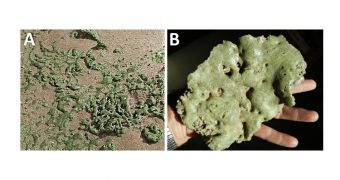A University of California in Santa Barbara (UCSB) expert was recently part of a team that uncovered new evidence supporting the idea that a space impact was responsible for the disappearance of North American megafauna.
This occurred during a time called the Younger Dryas Boundary (YDB), which began roughly 12,900 years ago. The phenomenon first registered as a temperature anomaly in the geological record, but some researchers suggested that it was caused by a space impactor, not a planetary process.
The new discovery – which is based on a sample analysis of sedimentary rocks collected from a thin geological layer - suggests that the latter were correct, and that an impact indeed led to the extinction of mammoths and giant ground sloths, among other species.
Some scientists believe that the ancient Clovis culture was significantly affected by the event as well. The climate instabilities and food scarcity caused by the impact could have thrown this civilization into a downward spiral from which it never recovered.
UCSB professor of Earth science James Kennet was part of the international collaboration of 18 researchers that conducted the new study, on a thin layer of sedimentary rock in Pennsylvania, South Carolina, and Syria.
At all the locations, the group identified melt-glass material in a very thin sedimentary layer. Dating techniques place the age of this material at roughly 13,000 years. According to the researchers, they could have not formed at temperatures lower than 1,700 to 2,200 degrees Celsius (3,100 to 3,600ºF).
Such high temperatures could have only been produced by a space body impacting the surface of the planet, the team argues. Their conclusions are in favor of the controversial Younger Dryas Boundary (YDB) hypothesis.
Details of the new investigation appear in a paper published in the June 11 issue of the esteemed journal Proceedings of the National Academy of Sciences (PNAS).
“These scientists have identified three contemporaneous levels more than 12,000 years ago, on two continents yielding siliceous scoria-like objects (SLO's),” comments scientist H. Richard Lane.
“SLO's are indicative of high-energy cosmic airbursts/impacts, bolstering the contention that these events induced the beginning of the Younger Dryas. That time was a major departure in biotic, human and climate history,” he goes on to say.
Lane holds an appointment as a program director with the US National Science Foundation's (NSF) Division of Earth Sciences, the organization that funded the new investigation.

 14 DAY TRIAL //
14 DAY TRIAL //